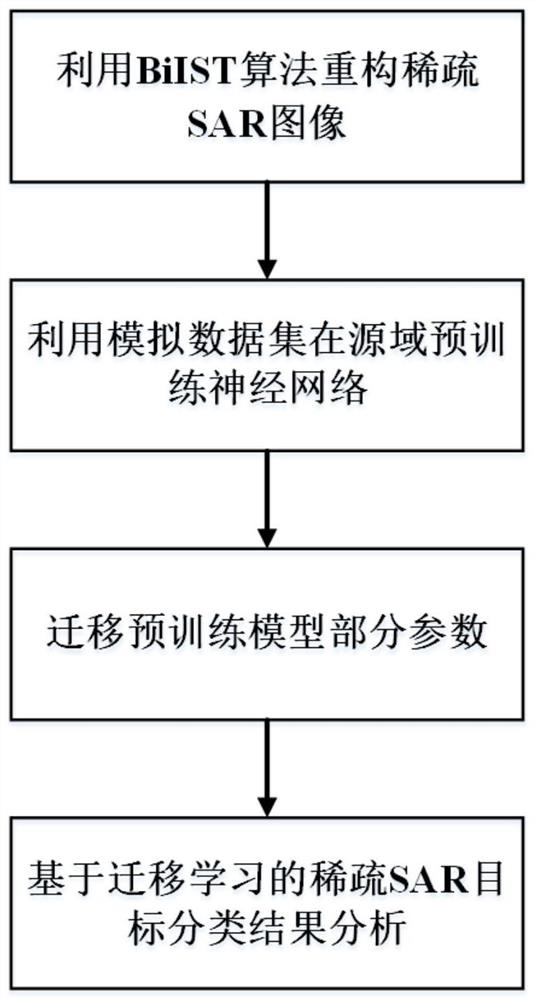Sparse SAR (Synthetic Aperture Radar) target classification method and device based on transfer learning
A technology of target classification and transfer learning, applied in the direction of neural learning methods, instruments, biological neural network models, etc., can solve problems such as difficulties and expensive SAR images, and achieve faster fitting speed, improved classification accuracy, low clutter and side effects flap effect
- Summary
- Abstract
- Description
- Claims
- Application Information
AI Technical Summary
Problems solved by technology
Method used
Image
Examples
Embodiment Construction
[0035] The present invention will be further described in detail below in conjunction with the accompanying drawings.
[0036] The present invention proposes a sparse SAR target classification method based on migration learning, such as figure 1 The specific implementation steps are as follows:
[0037] Step 1: Reconstruct the sparse SAR image using the BiIST algorithm based on the matched filtered SAR image.
[0038] The invention is based on the matched filtering SAR image, and uses the BiIST algorithm to reconstruct the SAR image. Taking m+1 step iteration as an example, the specific iterative process of the BiIST algorithm is shown in Table 1:
[0039] Table 1 shows the iterative process of the BiIST algorithm
[0040]
[0041] Among them, ε represents the error parameter of reconstruction, K represents the scene sparsity, W (m) is an intermediate variable introduced in the iterative process to retain the phase information of the target; parameter Used to control ...
PUM
 Login to View More
Login to View More Abstract
Description
Claims
Application Information
 Login to View More
Login to View More - R&D
- Intellectual Property
- Life Sciences
- Materials
- Tech Scout
- Unparalleled Data Quality
- Higher Quality Content
- 60% Fewer Hallucinations
Browse by: Latest US Patents, China's latest patents, Technical Efficacy Thesaurus, Application Domain, Technology Topic, Popular Technical Reports.
© 2025 PatSnap. All rights reserved.Legal|Privacy policy|Modern Slavery Act Transparency Statement|Sitemap|About US| Contact US: help@patsnap.com



